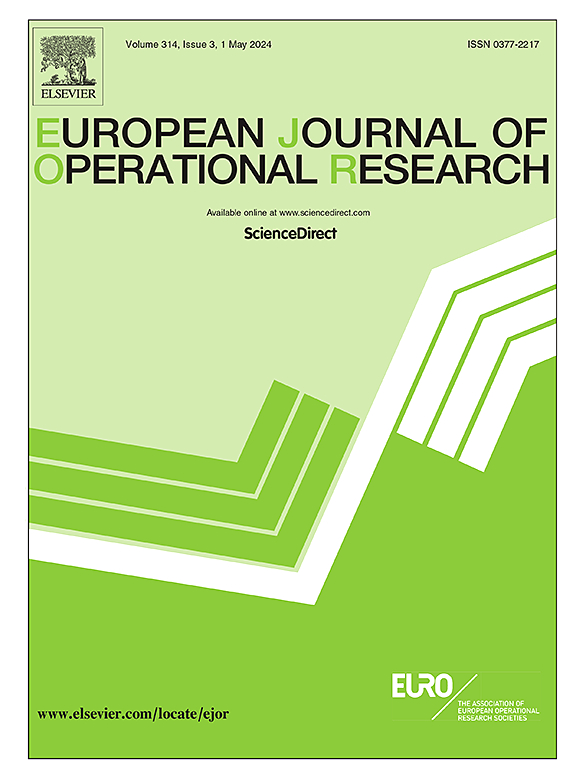Exploring the minimum cost conflict mediation path to a desired resolution within the inverse graph model framework
IF 6
2区 管理学
Q1 OPERATIONS RESEARCH & MANAGEMENT SCIENCE
引用次数: 0
Abstract
The existing inverse graph model for conflict resolution (GMCR) research primarily concentrates on identifying the required preferences of decisions makers (DMs) such that a desired state is an equilibrium. However, the process of transitioning from the current state to the desired equilibrium is not explored. In this paper, we propose a minimum adjustment cost model taking account of preference adjustment costs to identify the required preferences for a desired state to be an equilibrium. Subsequently, we introduce the concept of transition costs for the first time to quantify expenses involved in guiding a DM transition from one state to another and develop a minimum cost conflict mediation path model. This model aims to identify the most efficient path that minimizes the cost of transitioning from the current state to the desired equilibrium. Moreover, to accommodate the consideration of multiple desired equilibria, we extend the minimum cost conflict mediation path model to analyze and determine the optimal path for transitioning from the current state to one of the identified desired equilibria with the overall minimum cost. Furthermore, to address uncertainty surrounding transition costs, we formulate a probability maximizing conflict mediation path model that considers a limited budget available for the mediation process. Finally, a real-world dispute, the fracking conflict in the province of New Brunswick, Canada, is utilized to demonstrate the application of the proposed models.
在逆图模型框架内探索成本最低的冲突调解路径,以实现理想的解决方案
现有的冲突解决逆向图模型(GMCR)研究主要集中在确定决策者(DMs)所需的偏好,从而使理想状态成为一种平衡。然而,从当前状态过渡到理想均衡状态的过程却没有得到探讨。在本文中,我们提出了一个考虑偏好调整成本的最小调整成本模型,以确定理想状态成为均衡状态所需的偏好。随后,我们首次引入了过渡成本的概念,以量化引导 DM 从一种状态过渡到另一种状态所涉及的费用,并建立了一个最小成本冲突调解路径模型。该模型旨在找出最有效的路径,使从当前状态过渡到理想均衡状态的成本最小化。此外,为了考虑多个理想均衡状态,我们扩展了最小成本冲突调解路径模型,以分析并确定从当前状态过渡到所确定的理想均衡状态之一的最佳路径,且总体成本最低。此外,为了解决过渡成本的不确定性,我们提出了一个概率最大化冲突调解路径模型,该模型考虑了调解过程的有限预算。最后,我们利用加拿大新不伦瑞克省的压裂冲突这一现实世界中的争端来展示所建议模型的应用。
本文章由计算机程序翻译,如有差异,请以英文原文为准。
求助全文
约1分钟内获得全文
求助全文
来源期刊

European Journal of Operational Research
管理科学-运筹学与管理科学
CiteScore
11.90
自引率
9.40%
发文量
786
审稿时长
8.2 months
期刊介绍:
The European Journal of Operational Research (EJOR) publishes high quality, original papers that contribute to the methodology of operational research (OR) and to the practice of decision making.
 求助内容:
求助内容: 应助结果提醒方式:
应助结果提醒方式:


